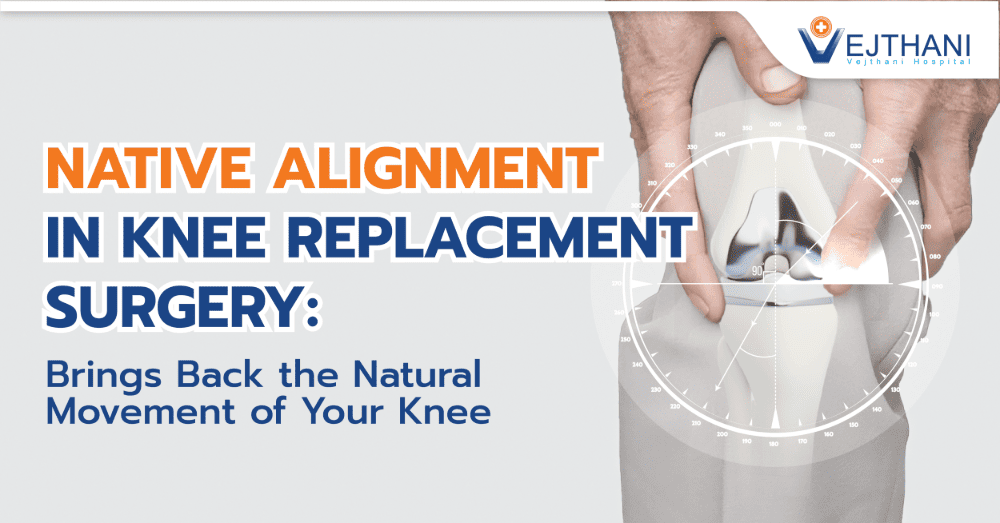
Aorta surgery
Overview
Aorta surgery is a medical procedure aimed at addressing issues with the body’s largest artery, the aorta. This vital artery plays a crucial role in transporting oxygen-rich blood from the heart to the rest of the body. It originates at the heart and extends down to the abdomen, ensuring the distribution of oxygenated blood throughout the entire body.
Aneurysms are caused by the aorta’s walls being weak and stretched out as a result of a high blood flow through it. Aortic dissection, which is also caused by high blood pressure, occurs when the layers of the aorta wall are forced apart.
The aorta’s capacity to deliver blood containing oxygen to the body’s cells and tissues is compromised by these problems. Life-threatening injury can occur in specific circumstances.
Reasons for undergoing the procedure
When an aneurysm increases in size by approximately half an inch each year, healthcare providers may consider surgical intervention. The timing for surgery on a slow growing aneurysm can vary. However, given the heightened risk of dissections and ruptures when the aneurysm reaches around 2.4 inches, most surgeons opt for surgical intervention when the aneurysm’s diameter is between 2 to 2.2 inches.
Before the patient’s aorta wall is in danger of breaking, aortic surgery is required. Aortic dissection may occur if their aorta wall becomes overly strained.
Aortic dilation (widening) and aortic dissection (tearing), both of which increase the risk of potential life-threatening events, are caused by a variety of diseases and disorders.
Aortic dissection and aneurysms may be caused by the following conditions:
- Atherosclerosis.
- Hypertension.
- Connective tissue disorders.
- Genetic conditions such as Marfan syndrome.
- Injury.
Aortic aneurysms (weakened, bulging artery walls in the aorta) come in a variety of forms that can be treated with aorta surgery. Anywhere along the aorta, including the following, can experience an aneurysm:
- Abdominal aortic aneurysms.
- Thoracic aortic aneurysms in the chest. These can affect the aortic root, the ascending or descending aorta, or the aortic arch.
- Thoracoabdominal aortic aneurysms, which occur in both the chest and the abdomen.
Aortic dissection, or the separation of the layers of the aorta wall, is another condition that can be treated with aorta surgery. A tear in the aorta’s inner layer allows blood to pass through. The condition poses a danger to life.
Aorta surgery is essential for individuals who have congenital heart conditions like coarctation (narrowing) of the aorta or transposition (reversal) of the great arteries since they require corrective procedures.
Risk
The specific type of aorta procedure performed on the patient will influence the associated risks.
Risks associated with repairing an aortic dissection may include:
- Bleeding.
- Blood clots.
- Heart attack.
- Stroke.
- Kidney failure.
- Leg paralysis and ischemia.
- Breathing problems.
- Bowel ischemia.
Procedure
Depending on the circumstances, a healthcare provider can perform aortic surgery using various approaches or methods, such as:
- Open heart surgery (procedure involving breastbone splitting).
- Thoracotomy, or cutting the ribs in between.
- Passing through blood vessels (minimally invasive or endovascular approach).
Endovascular surgery involves surgical procedures conducted by surgeons using slender, long tubes called catheters within the patient’s body. Healthcare providers use catheters to guide a stent graft through small incisions in the groin, leading to the location of the aneurysm within the blood vessels.
A short wire-mesh tube (scaffold) known as an endovascular stent graft strengthens the aorta’s weak area. The graft permits blood to travel through it without pressing on the aneurysm by firmly sealing the region with the artery above and below the aneurysm.
The following benefits of endovascular treatment for thoracic aneurysms:
- Less painful than open heart surgery
- Smaller incisions reduce the risk of problems compared to traditional open-chest surgery.
- A better choice for patients who are not candidates for open-chest surgery, which carries greater risks.
- Lesser recovering time.
Before the procedure
Ensure that the healthcare provider is informed about all medications the patient is using, including over-the-counter ones. Prior to surgery, they may advise the patient to discontinue certain medications for a specified duration.
Attend all scheduled appointments, including those for imaging, bloodwork, and electrocardiograms, as directed by the healthcare provider. They get important information from this that they can use during the operation.
Request a ride to and from the hospital. They might also want someone to stay with them the first few days after they return from the hospital.
Learn what to do in advance, such as when to stop eating the night before surgery.
During the procedure
The type of aorta problem the patient has will determine the surgical approach, as will the approach the healthcare provider takes.
- Surgical procedure for aortic aneurysms: The surgeon will replace or strengthen the stretched out portion of the aorta if they have an aneurysm. To replace or fix blood arteries, they employ a synthetic fabric like Dacron.
- Aneurysm in the ascending aorta: The surgeon may utilize a tube graft to replace the weakened area in the case of an aneurysm in the ascending aorta (which rises up toward the head). Through a sternotomy, or breastbone cut, they gain access to it. Additionally, they will do surgery on the aortic arch, a curving section that rises toward the neck, using this technique.
The surgeon may need to replace or repair the aortic valve and/or the aortic root close to the valve, depending on where the aneurysm is located. - Aneurysm in the descending thoracic aorta: The healthcare provider can access an aneurysm in the descending thoracic aorta, which runs toward the abdomen, by making a cut between the ribs (thoracotomy). Another method of making the repair involves inserting a stent inside the aneurysm after passing it through the arteries known as a thoracic endovascular aortic repair.
- Ascending and descending aortic aneurysm: Aortic aneurysms that require replacement of the aorta from the aortic valve to the aortic bifurcation (where the aorta splits into two) are treated by complex aortic surgeries.
The surgeon often performs an operation on the aortic root, ascending aorta, and arch (the first portion of the aorta as it emerges out of the heart) as a first step if the aneurysm extends from the aortic root down to the aortic bifurcation.
The surgeon then prepares a second stage for the remaining descending thoracic and abdominal aneurysms after the patient has recovered. That isn’t always the case, though. For each person, they occasionally need to tailor their strategy.
The axillary artery, which is a branch of the arm’s major artery, supplies blood flow to the body’s organs during the operation.
Thoracoabdominal aneurysms can be repaired by surgeons with a single procedure involving simultaneous incisions in the mid-abdomen and chest.
The surgeon can replace the aortic valve, ascending aorta, and arch in the initial stage. They insert a “elephant trunk” graft, which has a tubular shape and hangs in the descending aorta. This will serve as a proximal attachment in a later stage.
The second stage involves repairing a thoracoabdominal aneurysm, which is typically done by making a single incision across the chest and belly to fix the aorta all the way down to the aortic bifurcation (to your legs). More recently, to make the thoracoabdominal component simpler, stents are first deployed in the thoracic descending aorta as part of the second stage.
The second stage only uses an endovascular method when the aneurysm extends from the root to the descending thoracic aorta above the abdominal aorta and its branches to the abdominal organs. From the “elephant trunk” all the way down to the “normal” abdominal aorta, stents are placed. - Aneurysm in the aortic root: Aortic root aneurysms are treated while the aortic valve is preserved using the David’s valve-sparing aortic root replacement technique and its variants. If the aortic valve cannot be used, they can utilize a bioprosthetic valve (a valve constructed of organic material).
- Surgery for aortic dissection: The patient will require emergency surgery if they have an aortic dissection in either their ascending aorta or aortic root. The breastbone will be cut (sternotomy) by the surgeon. For the purpose of managing breathing and blood circulation, they will employ a heart-lung machine. An injured ascending aorta is replaced with a fabric graft. The aortic valve, aortic root, or aortic arch may also require replacement.
If the root, ascending aorta, and aortic arch are not involved in the dissection, some patients might be able to undergo an aortic dissection repair without requiring a breastbone incision. In a thoracic endovascular aortic repair, the surgeon inserts a stent graft into the descending thoracic aorta by passing it through the arteries.
After the procedure
The patient’s treatment will commence in the ICU, where they might regain consciousness with a breathing tube in place. Once they regain the ability to breathe independently, the tube will be removed. Afterward, as the patient’s condition allows, they will gradually start ambulating. When a patient’s condition no longer necessitates intensive care, they will be transferred to a different room.
Once a patient meets the criteria for discharge, they will have a discussion with their healthcare provider regarding the possibility of returning home.
Outcome
People often stay in the hospital for a week following aorta surgery for an aneurysm. Additionally, they require at least a month of recovery. A patient who undergoes minimally invasive surgery could only need one or two days in the hospital.
Patients can generally expect a hospital stay of approximately one week following an aortic dissection, although it may extend to three or four weeks if complications arise. The survival rate after aortic surgery is influenced by factors such as the type of surgery performed and other variables.
Survival rates are typically higher following elective (preventive) aorta surgery compared to emergency surgery. For instance, 99% of patients undergoing elective endovascular surgery for abdominal aortic aneurysms survive 30 days post-surgery. Surgical excision for the same aneurysm yields a 96% to 98% 30-day survival rate. However, when an aneurysm ruptures, only around 50% to 70% of patients survive the surgery.
After one year, the survival rates for aortic arch and ascending aorta aneurysms ranged from 81% to 95%. They ranged from 60% to 73% after eight to ten years.
If a patient has any of the following symptoms, patient need to contact their healthcare provider:
- Swelling, redness, or drainage where the incision site.
- Fever.
- Shortness of breath.
- Chest pain.
Patients with an aortic aneurysm or dissection will need regular follow-up appointments with their healthcare provider. During these visits, the healthcare provider will monitor for potential complications, assess the stability of the aorta, and may recommend radiographic imaging through CT scans or MRI as part of the evaluation.
Contact Information
service@vejthani.com






















